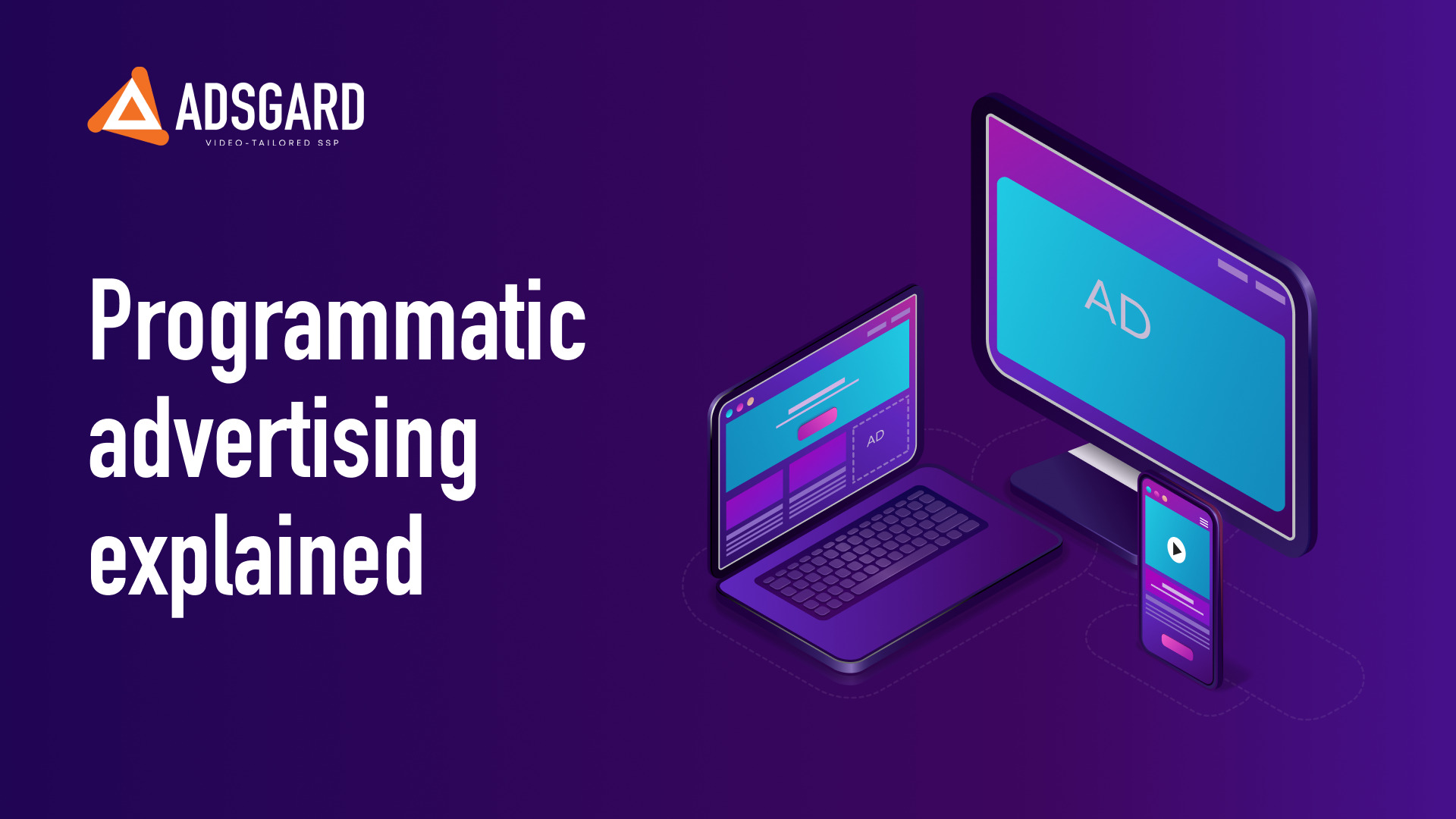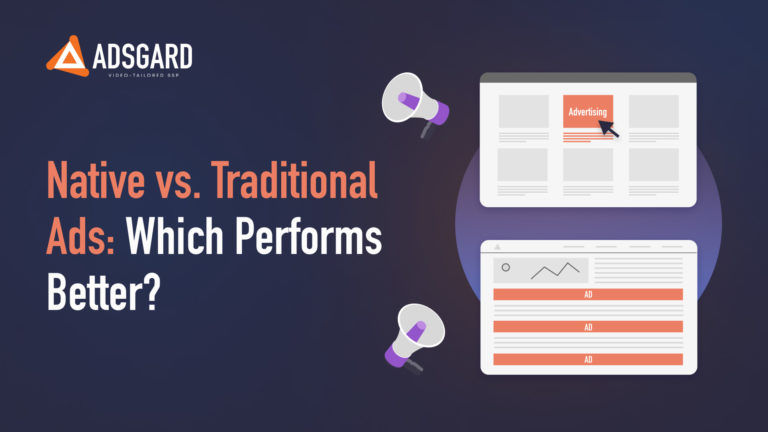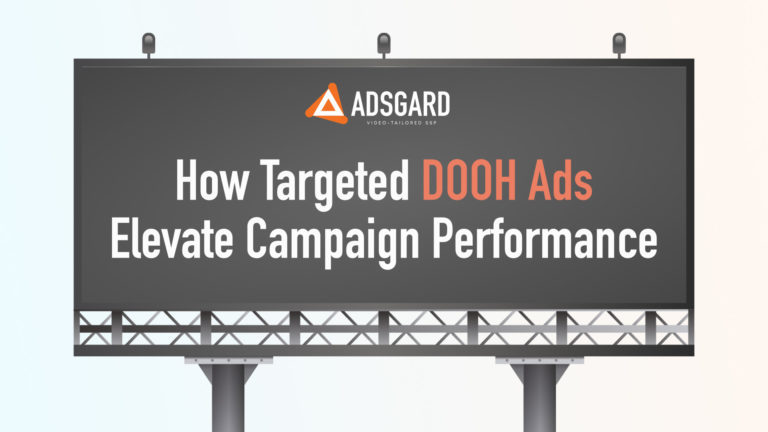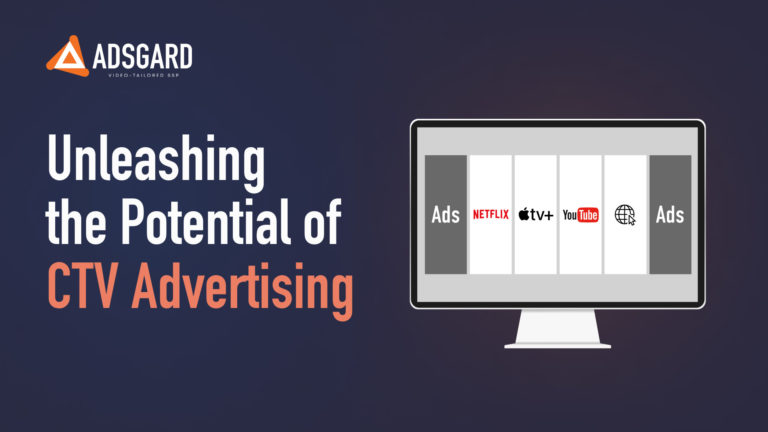
In 2021, advertisers spent more than 90% of their budgets allocated to display advertising (i.e. the ads shown on phones, desktop computers, TVs, and other devices) on programmatic advertising. What makes them invest that amount of money in it? This article is aimed at explaining what programmatic advertising is and why it is efficient both for the owners of ad spaces and advertisers.
What is programmatic advertising?
To put it in a nutshell, programmatic advertising is a way of automated sales and purchases of ad inventories. The process is fully robotized and excludes the human factor, which only benefits the process.
How did it work before? The traditional interaction between the parties includes requests for proposals, tenders, prices, and negotiations. All of these require time, effort, and money, whereas programmatic advertising technology uses algorithmic software to sell and buy the online advertising space bypassing all the above mentioned.
Programmatic agencies and platforms can help their clients interact exclusively with their target audiences, i.e., users who might be genuinely interested in the offer. Programmatic advertising directs the targeting data to the most relevant markets using demographic features, which makes the process of purchase and ad placement the most efficient and provides marketers with high rates of return on investments.
Aims
Programmatic advertising aims to increase the efficiency and transparency of advertising campaigns both for the advertiser and the supply side. This is done with the help of real-time auctions when the ad space is sold, along with the user opening a web page or an application.
Who it may be useful to?
Who uses programmatic display advertising? Earlier, it used to be available only to large companies. However, now everyone uses it, including small and medium-sized businesses. Moreover, it does not matter whether you are on the demand or supply side. You still have the opportunity to cooperate with large companies in the premium sector.
But the main benefit is that this tool is a godsend for marketers. The understanding of behavioral conclusions that can be made based on the obtained data is the first step toward an efficient programmatic strategy. There are three main levels of data:
- Primary data, or the advertiser’s information on their clients;
- Secondary data is collected not by the advertiser but by, for example, an agency that shares this information with the brand to help them structure their algorithmic strategy;
- Third-party data is available to anyone for a fee and is usually bought from large aggregators that collect data from various platforms and websites.
Programmatic advertising allows you to go beyond these three levels and try out a drastically different way of lead generation.
RTB and other ways of ad purchase
Earlier, we have already mentioned the automated sale and purchase of ad slots, so it is time to talk about the real-time bidding process (RTB). This is a way of inventory buying and selling through real-time auctioning, which means that the transactions take place in the course of the page download. This is how it works:
- When a user visits a web page, the advertising exchange platform gets a request with information about the website along with the user data;
- This information is compared with the data on the available advertisers, and the real-time auction between the most relevant advertisers (selected by such criteria as geography, topic, bid size, etc.) takes place;
- For instance, a user visits a website selling fishing gear but doesn’t buy anything. Later, when they visit their favorite news outlet, they are going to be displayed different ads for the products they have been interested in, and these are the ads that have been bought at the real-time auctions;
- Thus, while the user is loading the site, the fishing gear shop and other participants interested in displaying ads to fishermen take part in the auctioning process. The party that offers the highest bid is going to get the slot and to show their ads.
RTB allows advertisers to target their audiences with much higher precision. It means that only those users who are likely to be interested in the offer will see the ad.
Please, note: RTB is a type of programmatic advertising, however, not all of it takes place through real-time bidding. Programmatic advertising tools are a way of making the ad purchase automated, and RTB is just one of its constituent parts. Although this method is the most widely used, but there are other options as well.
Alternatives to RTB
There are other methods of programmatic advertising sale and purchase, such as:
- Programmatic direct or direct algorithmic purchase. This method allows you to buy a guaranteed number of ad showings on specific platforms. It is mostly used for large “premium” formats like full-page ads. This method often means an agreement on a fixed price, but not an auction;
- Private Exchange buying (PMP), which is a marketplace only available via an invitation to one or several publishers to participate in bidding for the slots in their inventory. These are used as a method to circumvent the ad exchange services when the purchase platform directly connects to the publisher’s resources. There is usually an auction, but the details of the deal are agreed upon in advance, which cannot happen when using the RTB method.
Components of programmatic advertising services
Usually, programmatic advertising services consist of three platforms:
- Demand-Side Platform (DSP);
- Supply-Side Platform (SSP);
- AdExchange.
The services also have a Data Management Platform (DMP).
What is a DSP?
A demand-side platform is a platform that allows advertisers to purchase ad space automatically. This is how it works:
- Advertisers register at a DSP, which, in turn, is connected to an ad exchange;
- When a user visits a website connected to the SSP, it gets a signal to start auctioning;
- Further, the SSP sends a request to the DSP whether the advertiser has any commercials that might be relevant to the suggested placement;
- If so, DSP sends a signal for participation in the real-time auction along with other advertisers that are competing for the designated slot;
- The auction winner gets the opportunity to show their commercials to the website visitor.
What is an SSP?
This is a platform for the developers or owners of websites and mobile applications that sell their resources as advertising placement sites (native ads, interactive inserts, banners, etc.).
Earlier, it used to be done manually, and each publisher had to employ marketers and managers responsible for the interaction with the advertisers and the sales of their ad space.
Nowadays, the process is fully automated. SSP connects to the ad exchange, where it forwards the information on the available advertising inventory (ad space). Via real-time bidding, the inventory is automatically sold at an auction to the advertiser offering the highest price. Publishers are free to set their rates based on the cost-per-mile (CPM) rates at similar services, websites, or applications. This information is generally available and regularly published in open sources.
What is a DMP?
This platform is used to collect, store, and sort information along with the segmentation of the incoming cookie data. These processes are essential for the correct advertising targeting of specific groups of users. This platform is connected to the DSP for the purpose we explain further.
DMP is a type of database with user information, but without a connection to a DSP, it is not very helpful. DSP alone, in turn, cannot make well-informed decisions on where to purchase necessary ad slots. The integration of the two provides the main advantage, which is access to the programmatic targeting parameters.
What is Ad Exchange?
Ad Exchange is a technological platform that makes the purchase and sales of media advertising inventory from several advertising networks easier. This is a kind of bridge between an SSP and a DSP that significantly simplifies the interaction of the two platforms.
At the moment, the majority of ad exchange markets work through real-time auctions when the purchase of ad slots takes place at the same time as a visitor loads the website. The exchange of advertisements happens inside a programmatic ecosystem and is connected to a DSP on the advertiser’s side and an SSP on the publisher’s end.
Programmatic targeting
Here are the parameters that are used for advertisement targeting:
- Context (relevant to the subject). It is used to show commercials on the platform with relevant subjects. For example, an advertisement for a mobile phone accessories shop might be displayed on an electronics store website;
- Keywords, or targeting based on displaying ads for key queries.g., if an advertiser sells food supplements, they might provide a list of relevant keywords on the subject. They might want to be seen in the articles talking about healthy lifestyles but not about illnesses and their treatment. Generally, the list of keywords is compared to the keywords used in the article to ensure the best compliance for the ads;
- Data targeting (audience targeting). In this case, the ads are shown based on the cookie files of a user and not on the context of the viewed resource. It means that the person that has previously visited a financial services website might be shown the commercial for your brand, even if the next site they visited was, e.g., a news portal, all because they have shown interest in financial products before;
- Geography, or targeting based on location. It can be a city, a region, a province, or a larger region. For instance, if an advertiser wants to promote a restaurant in a city center, they will have to set up their target for that area plus the adjoining streets. In some cases, they may target their ads to the whole city. But if you sell virtual goods (online games, applications, etc.) it makes sense to target, say, the whole European region;
- On average, about 2-3% of users convert when visiting advertisers’ websites. Retargeting is aimed at bringing the other 97-98% back. This method operates based on the cookie files, so, basically, it is a tool for lead generation based on the users that are familiar with your product but haven’t bought anything yet.
What programmatic advertising offers: advantages
In the past, advertising slots used to be chosen randomly. This resulted in budgets being wasted, naturally, without any positive outcome. This system was infamous for being too expensive for marketing experts.
Now you can rely on an algorithm that will decide what is the best way to spend your advertising funds; this way you get an optimized advertising campaign. All you have to do now is to provide the programmatic service with the information on your campaign, audience, and key performance indicators. The software is going to do all the hard work for you.
The robot will not only launch your campaign but track your advertising expenditures to find additional opportunities to improve it. If you want to optimize your advertising spending, increase your company’s return on investments, and resonate with your target audience, programmatic advertising can help you achieve success.
Moreover, programmatic advertising services give a chance to compete with larger players, even for smaller businesses. They open a completely new dimension that used to be unavailable to small companies. Forget about media agencies and mediators. Buy advertising directly, as it is faster, cheaper, and more efficient.
Are you the owner of an online platform, a website, or a mobile application? Great! Regardless of the fact whether you own a single site or a large publishing network, we can help you increase your revenue with the help of programmatic advertising. Do not miss the chance to use the programmatic advertising benefits in your favor.
Is programmatic advertising expensive?
At this point, you might probably wonder about programmatic advertising costs. The price is usually calculated based on CPM, which is an online advertising term defining the cost of an ad per 1000 impressions. This number can significantly vary depending on a number of factors – subject, targeting, show time, etc. The higher the inventory quality, or the more precise the targeting is, the higher the price.
The rates also depend on the sphere of the advertiser’s business, the device the ad has to be displayed on, and the placement on the page. On average, algorithmic prices vary from 0.5 to 2 USD, which is at least 5 times cheaper than the “manual” ad space purchase with the help of marketing divisions, negotiations, contracts, etc. It means that automated ad purchase allows you to increase your advertising budget and have more efficient and targeted campaigns. These are sure to have a positive effect on your ROMI and other metrics.
Forecasts and prospects
For visualization, let’s take the situation in the USA, where the global trends are set. For example, two years ago, American marketing experts spent more than 61 billion USD on programmatic advertising. It has been predicted that in 2023 this number is going to reach 133 billion, which is 91% of the whole digital advertising budget. It means that this technology is becoming total, and it makes sense to take advantage of it. For the publishers, it means a great opportunity to make money on the sales of their ad slots, whereas the brands get a chance to optimize the efficiency of their ad campaigns. 91% spent on display advertising is the number that says a lot!
In fact, such an increase surpassed all previous forecasts and can be largely explained by a quick recovery of this sphere after the COVID-19 pandemic, the development of artificial intelligence (AI), and the way it is changing the face of marketing. With the development of AI, we are granted the opportunity to combine the comparison of ad viewing metrics with user data which will assist in more precise ad placement. This, in turn, will lead to lower costs. Plus, the system of real-time ad purchase/sale works perfectly and requires a minimum of time and money.
How to avoid advertising fraud?
Digital advertising fraud is one of the current issues that the marketing industry is facing. Because of it, the advertisers lost more than 23 billion USD globally in 2019 alone, and it has been forecasted that by the end of 2022, the advertisers will have spent more than 32 billion USD to fight this problem. Programmatic advertising uses several solutions that help prevent fraudulent activity, including blockchain, the ads.txt initiative, and many services that provide significant assistance in reducing fraud levels.
How to start working with programmatic advertising?
Programmatic advertising has a bright future, and now is the time to start taking advantage of this growing trend with the Adsgard team. If you want to try this technology out right now and see how your digital product can be monetized, the Adsgard platform is a great place to do so. We offer you a programmatic self-service platform that requires a minimum investment giving you the possibility to set up your ad campaign in your personal account within a matter of minutes. It is a great way to monetize mobile applications (including games) from scratch.
Register as an owner/developer and get hold of the Adsgard leading programmatic platform! For the advertisement space owners, it is a great way to start getting revenues today.



